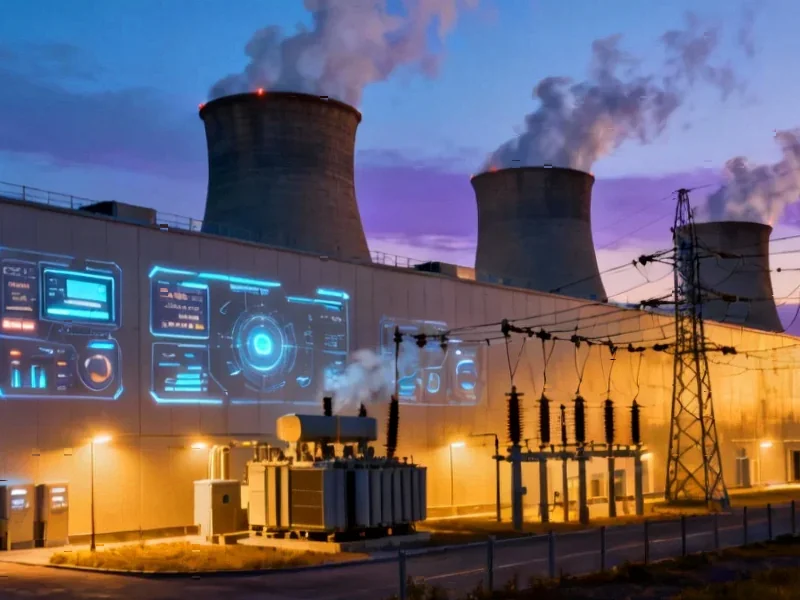According to DCD, Microsoft has signed a $9.7 billion, five-year agreement with Iren to access the company’s Nvidia GB300 GPUs, with Microsoft providing 20 percent in prepayment. The GPUs will be deployed at Iren’s data center campus in Childress, Texas, in phases through 2026, with liquid-cooled data centers comprising 200MW of the campus’s total 750MW capacity. Iren, formerly known as Iris Energy, is transitioning from cryptocurrency mining to AI cloud services and currently operates approximately 23,000 GPUs across North America. Microsoft’s Jonathan Tinter emphasized Iren’s expertise in building integrated AI cloud infrastructure as key to the partnership. This massive commitment reflects Microsoft’s aggressive push to secure AI compute capacity amid growing constraints.
The GPU Scarcity Crisis Intensifies
Microsoft’s $9.7 billion commitment to a single provider underscores the severity of the GPU supply chain crisis that’s gripping the entire AI industry. While Nvidia continues to report record earnings, the reality is that demand for high-performance AI chips far outstrips manufacturing capacity. Microsoft isn’t just buying GPUs—it’s essentially funding Iren’s entire infrastructure buildout through prepayments and long-term commitments. This represents a fundamental shift in how hyperscalers approach capacity planning, moving from just-in-time procurement to essentially becoming infrastructure financiers. The company’s recent earnings revealed they spent $11.1 billion on data center leases in a single quarter, indicating this isn’t an isolated strategy but part of a broader, desperate scramble for compute resources.
High-Risk Bet on a Crypto Miner Turned AI Provider
The most concerning aspect of this deal is Microsoft’s reliance on a company that until recently was primarily focused on Bitcoin mining. While Iren has technical expertise in operating power-intensive computing infrastructure, the leap from cryptocurrency mining to enterprise-grade AI cloud services is substantial. Crypto mining operations prioritize cost efficiency and uptime, but lack the sophisticated orchestration, security, and reliability requirements that Fortune 500 companies demand for AI workloads. Microsoft is essentially betting that Iren can transform its operational DNA while simultaneously scaling to hyperscale levels. The company’s pivot strategy appears sound on paper, but execution risk remains exceptionally high given the compressed timeline and massive scale involved.
The Hidden Power Infrastructure Challenge
What makes this deal particularly revealing is the emphasis on Iren’s “secured power portfolio” of 3GW across North America. The real bottleneck in AI infrastructure isn’t just GPUs—it’s accessible, affordable electricity. Iren’s background in crypto mining gave them first-mover advantage in securing power contracts in regions with favorable energy markets. However, this creates significant concentration risk for Microsoft. If energy prices spike in Texas or regulatory pressure mounts on power-intensive computing operations, Microsoft’s entire AI roadmap could face disruption. The liquid-cooling technology mentioned for the 200MW deployment suggests they’re anticipating thermal density challenges that air cooling can’t handle, adding another layer of technical complexity.
Accelerating Market Consolidation
Microsoft’s deal with Iren follows a pattern of similar agreements with specialized GPU cloud providers including CoreWeave, Lambda, and others. This represents a strategic shift from building everything in-house to effectively outsourcing GPU capacity to specialized providers. While this accelerates time-to-market, it creates dependency on third parties and could lead to market consolidation where a handful of GPU infrastructure companies control critical AI resources. The Nvidia ecosystem is becoming increasingly concentrated, with Microsoft and other hyperscalers effectively funding the creation of potential future competitors in the AI infrastructure space.
Financial and Strategic Implications
The $9.7 billion price tag—representing nearly $100,000 per GPU if Iren reaches its 100,000-unit target—reveals the premium Microsoft is willing to pay for guaranteed capacity. This deal structure, with 20% prepayment, essentially makes Microsoft a financier for Iren’s expansion. The risk is asymmetric: if AI demand doesn’t materialize as projected, Microsoft is locked into expensive long-term contracts. Conversely, if the AI boom continues, they’ve secured capacity at what might prove to be bargain rates compared to future market prices. This reflects Microsoft’s broader Azure cloud strategy of dominating AI infrastructure regardless of cost, betting that control of compute will translate into platform dominance.
Execution and Reliability Risks
The phased deployment through 2026 creates significant execution risk. Delays in data center construction, GPU delivery, or power infrastructure could disrupt Microsoft’s AI service roadmap. More concerning is the operational reliability question—Iren has never operated at this scale for enterprise AI workloads. The difference between 99% and 99.9% availability might seem small, but for mission-critical AI applications, that gap represents hours of potential downtime that could cost enterprises millions. Microsoft will likely need to deploy substantial oversight and technical resources to ensure Iren meets enterprise-grade service level agreements, potentially eroding the economic benefits of the partnership.
Long-Term Strategic Concerns
This deal highlights Microsoft’s vulnerability in the AI infrastructure arms race. While they’re securing capacity, they’re also creating dependencies and potentially funding future competitors. Iren and similar specialized providers are building expertise and infrastructure that could eventually allow them to compete directly with Azure’s AI services. More fundamentally, this approach suggests Microsoft believes the GPU shortage will persist for years, forcing them to make expensive, long-term bets rather than waiting for supply to catch up with demand. The strategic implication is clear: control of AI compute is becoming more valuable than software innovation in the short term, and Microsoft is willing to pay whatever it takes to maintain its position.




